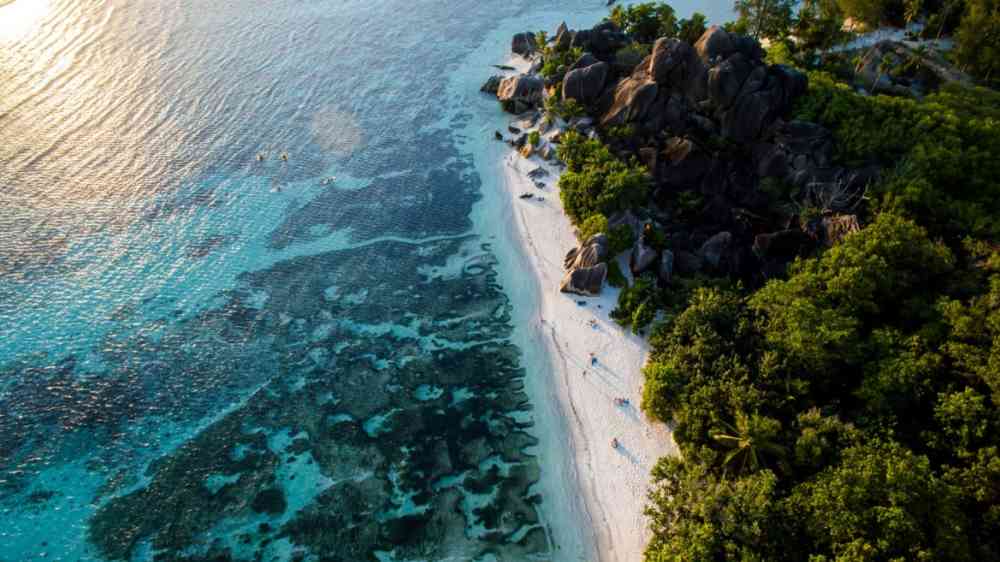Climate threat: Rising sea levels and stronger storms highlight the need for coastal resilience

Climate change is threatening coastal communities worldwide. Using local knowledge, as well as innovative practices such as parametric insurance, is needed to enhance coastal resilience and mitigate the impact of climate change.
As the world warms, the oceans are rising and coastal disasters are becoming more frequent and devastating. Communities living on the frontlines of climate change are facing death, infrastructure damage, and the loss of their homes, as they are forced to relocate to higher ground. The onslaught of coastal disasters, such as typhoons, also raises the specter of a prolonged recovery with long-term consequences, if recovery is even possible.
In its latest assessment report, the Intergovernmental Panel on Climate Change warned that tropical cyclones will become more intense as global warming increases. Warmer ocean temperatures could drive stronger tropical cyclones, and rising sea levels could inundate coastal areas. Even if we follow a low-carbon emissions pathway, sea levels will continue to rise by up to about 0.7 meters by the end of this century.
Countries in Southeast Asia have coastlines that are among the longest in the world, making them particularly vulnerable to the impacts of a warming ocean. The International Monetary Fund has said long coastlines and heavily populated low-lying areas make this region of more than 640 million people one of the most vulnerable to weather extremes and rising sea levels.
Developing the resilience of coastal communities to enable them to bounce back more quickly from disaster is vital to prevent a single event from becoming a long-term community-wide calamity. This can be done in a variety of ways. Parametric insurance can help to expedite recovery and aid in disaster response. It should be considered by companies operating in areas vulnerable to coastal damage, or by governments interested in mitigating the financial risks of such occurrences. Such insurance schemes differ from traditional schemes because they pay out according to natural parameters – such as a storm’s strength – rather than physical financial damage.
For example, a parametric insurance policy for typhoons might provide a certain payout whenever wind speeds exceed a certain level in a particular location. Since such parameters can be easily and quickly verified after the event, and such policies do not require assessments of actual damages incurred, parametric policies can pay out quickly and aid in disaster recovery.
For communities that cannot afford insurance premiums, nature can be an asset. They could potentially raise revenue from the sale of carbon credits from mangrove conservation to pay for parametric insurance coverage.
In addition to being a supplier of blue carbon credits, mangroves also play a critical role in storm protection. Conserving coastal ecosystems can lower the insurance premium as the risk becomes lower. A 2005 study showed that mangroves can help in storm protection, but the degree of this protection depends on the quality of the mangrove forest.
Holistic coastal management policies that incorporate inland developments must be enacted to help nature help people.
Coastal habitats are vulnerable to developments inland and in the open ocean. Dams installed in rivers that eventually feed into the sea reduce sediment load that leads to instability of coastal deltas. Holistic coastal management policies that incorporate inland developments must be enacted to help nature help people.
Finally, efforts to build coastal resilience must involve the communities in these areas or risk backfiring. Indigenous knowledge could also bolster adaptation efforts.
There is growing interest in large-scale mangrove restoration around the world, due to the ability of these habitats to soak up carbon dioxide and protect coastlines. But only a small number of projects have been successful, with some planting sites even yielding a zero success rate.
This is because mangrove restoration efforts face various challenges. These include inappropriate planting locations, conflicts over land tenure, and insufficient engagement with local communities in utilizing the restored areas. Even when funding is accessible, social and communication barriers with the communities can impede the effectiveness of restoration programs.
The United Nations’ Intergovernmental Science-Policy Platform on Biodiversity and Ecosystem Services noted in a 2022 report that indigenous communities have knowledge, practices and worldviews that can guide the sustainable use of wild species to benefit both wildlife and the community.
Involving local communities in adaptation solutions is crucial to ensure their success. For example, at Palawan Island in the Philippines, indigenous cultural beliefs have helped to keep the mangrove forest intact in the northern part of the island. Communities living in the area recognize how a healthy mangrove forest can contribute to crab catch and coastal protection from typhoons and thus actively take part in mangrove replanting and patrols.
The ocean, a powerful ally in mitigating global warming by absorbing immense heat and carbon dioxide, is now bearing the scars of climate change. We need to break free from our reliance on fossil fuels if we are to prevent the global thermostat from surging further. However, alongside this critical task, we must also prioritize fortifying coastal communities' resilience.
By doing so, we can equip them to withstand the ravages of a changing climate, safeguarding not only their livelihoods but also the delicate balance of our oceanic ecosystems.